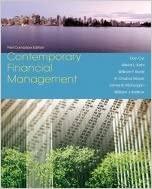Answered step by step
Verified Expert Solution
Question
1 Approved Answer
a . Allied has a standard form that is used in the capital budgeting process. ( See Table IC 1 2 . 1 . )
aAllied has a standard form that is used in the capital budgeting process. See Table IC Part of the table has been completed, but you must replace the blanks with the missing numbers. Complete the table using the following steps:
Fill in the blanks under Year for the initial investment outlays: CAPEX times T and NOWC
Complete the table for unit sales, sales price, total revenues, and operating costs.
Complete the table down to aftertax operating income and then down to the projects operating cash flows, EBIT T DEP.
Fill in the blanks under Year for the terminal cash flows and complete the project free cash flow line. Discuss the recovery of net operating working capital. What would have happened if the machinery had been sold for less than its book value?TABLE IC Allied's Lemon Juice Project in thousands
End of Year:
I. Investment Outlays
CAPEX
Increase in inventory
Increase in accounts payable
NOWC
II Project Operating Cash Flows
Unit sales thousands
Priceunit
Total revenues
Operating costs
Depreciation: bonus depreciation in Year
Total costs
EBIT or operating income
Taxes on operating income
EBIT Aftertax operating income
Add back depreciation
EBT T DEP
III. Project Termination Cash Flows
Salvage value taxed as ordinary income
Tax on salvage value
Aftertax salvage value
Recovery of NOWC
Project free cash flows
EBIT T DEP CAPEX NOWC
IV Results
NPV
IRR
MIRR
What is the primary weakness of sensitivity analysis? What are its primary advantages?
g Unrelated to the lemon juice project, Allied is upgrading its plant and must choose between two machines that are mutually exclusive. The plant is highly successful, so whichever
machine is chosen will be repurchased after its useful life is over. Both machines have an aftertax cost of $; however, Machine A provides aftertax savings of $ per year for
years, while Machine B provides aftertax savings of $ in Year and $ in Year
Please show all Excel formulas. Thank you

Step by Step Solution
There are 3 Steps involved in it
Step: 1

Get Instant Access to Expert-Tailored Solutions
See step-by-step solutions with expert insights and AI powered tools for academic success
Step: 2

Step: 3

Ace Your Homework with AI
Get the answers you need in no time with our AI-driven, step-by-step assistance
Get Started


